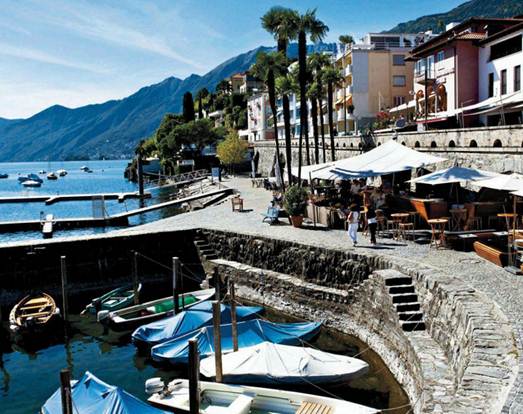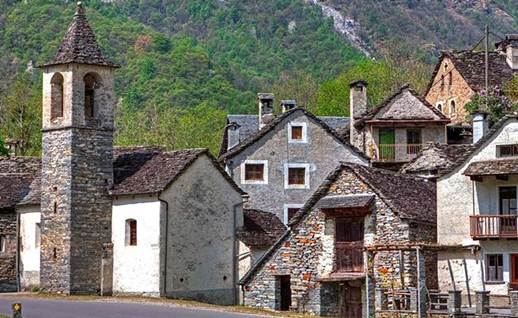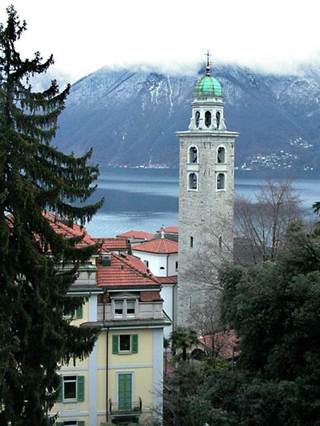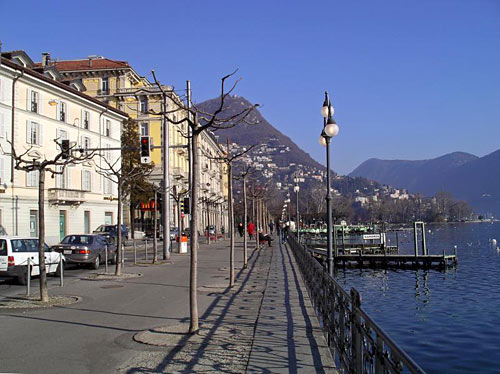Switzerland’s Italian-speaking canton is a
sensuous land of lakeside beaches, unspoilt valleys, literary greats and
mountain peaks. Lee Marshall salutes the Swiss Riviera

The
Restaurant Seven in Ascona
One day, while exploring one of the many
valleys of Ticino, the Italian-speaking part of Switzerland, I stopped to give
a lift to a hiker. He turned out to be a retired journalist from Zurich who had
spent much of his life analyzing Switzerland. It made him mad, he told me, when
fellow Swiss – especially Swiss Germans like himself – saw their country’s two
main religions (Catholic and Protestant) and four linguistic and cultural
groupings (German, French, Italian and Romansch) as some kind of burden. “We
have this wonderful gift of having a large swathe of Europe condensed into one
small country,” he said, eyes shining. “Think of the language skills it gives
you, and the lesson in tolerance, not to mention being able to get in your car
and go French or go Italian without leaving your country.”

valleys
of Ticino
Mention the Italian part of Switzerland to
anyone who knows the region even slightly and the chances are they will
immediately think of its two lakes: Lugano and Maggiore. Both are shared with
Italy, Switzerland having the lion’s share of Lugano and Italy dominating
Maggiore. But Ticino makes a lot of its short Maggiore shoreline. At the head
of the lake, Locarno and its neighbor Ascona are, respectively, the Nice and the
St Tropez of the Swiss Riviera, the first a prosperous city with a sunny
disposition and a vibrant cultural scene, the second a smart lakeside resort
with some of Ticino’s top hotels and an old town crammed with art galleries,
cafes and antique shops.

Lugano
is the biggest city in Ticino, the Italian-speaking part of Switzerland.
However, it is not the cantonal capital
The city of Lugano, to the south, combine
beaches, old-town culture and shopping with a serious business remit: it is the
third most important financial market in Switzerland after Geneva and Zurich.
In the Morcote peninsula, Lake Lugano has Como’s mix of patrician, historic
villas and romantic lake and mountain landscapes; and like Como it has long
attracted writers and artists, from author Hermann Hesse (of whom more later)
to leading Dadaist Hugo Ball.

The
city of Lugano
Ticino, though, has a life beyond its major
lakes. I was particularly impressed by Bellinzona, the administrative capital
but also a historic town girdled by three UNESCO-listed medieval castles that,
lit up at night, transform a pleasant working town info a fairy-tale film set.
The centro storico, with its multicoloured pastel houses and Veneto-style
arcades, is perhaps the best place in the whole region to enter into the
Italianate spirit of Ticino, and in Villa dei Cedri, Bellinzona has one of the
Ticino’s most unexpectedly satisfying art galleries. Its permanent collection
of artists who lived or worked in the area crystallizes something rather
touching about the hopes and aspirations of local art patrons over the course
of more than four centuries.

Lake
Maggiore, as seen from the Cardada viewing platform
Then there are the valleys, Alpine
Switzerland may lie further to the north, but Ticino has mountains, waterfalls,
hiking trails, flower-rimmed Alpine lakes and cute wooden villages in
abundance. There’s even a summer “beach” scene on rivers rather than lakes,
especially in the two valleys that corkscrew north from Locarno: the Valle
Maggia, which has a full-scale summer lido in a dammed section of the river at
Avegno, and the narrow Val Verzasca.